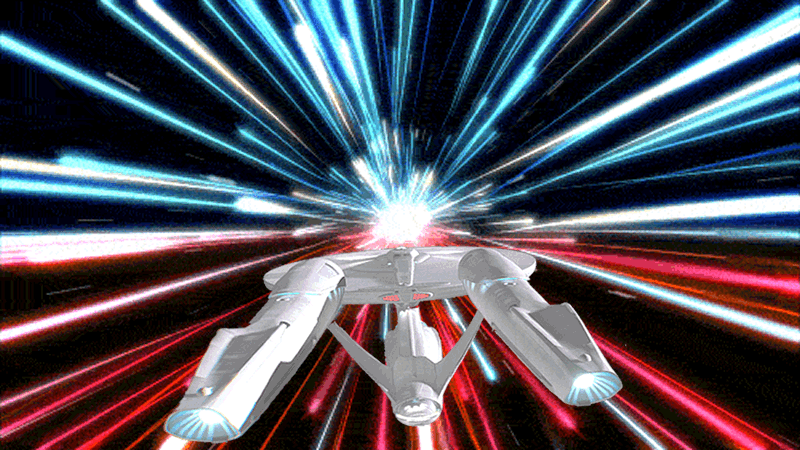
The original “StarTrek” television series featured technology that had first appeared decades earlier in science fiction stories. These Pulp heroes had ray guns, the ability to fly faster than the speed of light and could also instantaneously teleport from place to place. But perhaps the true inspiration of SrarTrek’s super science is the revolutionary physics discoveries of the early 20th century. Discovered by Albert Einstein and quantum physics, pioneered by Max Planck revealed a universe far different than ordinary human experience might suggest.

Although Einstein's theory forbids matter to accelerate past the speed of light, the demands of sci-fi "storytelling" requires objects and people to be able to travel between the stars in a reasonable amount of time, usually in hours or a couple days at most. Enter the space warp drive, or as it was called in “Star Treks" pilot episode "hyperdrive.”

The crew or the Enterprise measures velocity in warp factors. Warp factor 3 equals 512 times light speed. Even this velocity is too slow to allow starships to travel as quickly as they appear to on TV and or, in reality. The scriptwriters arbitrarily allowed the Enterprise to get to wherever it was going fast because this was convenient for storytelling. By the air of “Star Trek the Next General" the warp speed scale was alliterated. Under the new scale, The Enterprise could get from Earth to AIpha Centauri in about 37 hours at warp.
The technology and style of “Star Trek" was influenced by the 1955 film “Forbifdden Planet”.
In 1994, Miguel Akublerre proposed moving not a space-ship, but space itself, faster than light. All that would be required is to distort the fabric or space-time into a bubble surrounding a spaceship. Enormous energy would be required to get things started, but once created the bubble would move independently of the rest of the universe, even faster than light Wow!

The bubble moves by compressing the space time in front of it and expanding the space-time behind it.